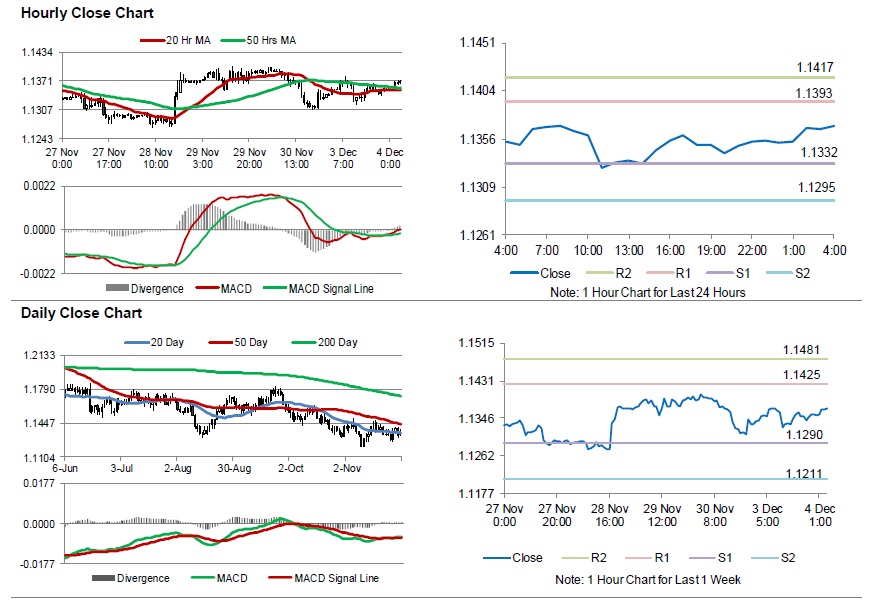For the 24 hours to 23:00 GMT, the EUR slightly rose against the USD and closed at 1.1355.
Macroeconomic news indicated that the Euro-zone’s final manufacturing PMI declined to 51.8 in November, marking its lowest level since August 2016. In the preceding month, the PMI had recorded a reading of 52.0. Market participants and preliminary figures had anticipated the PMI to fall to a level of 51.5.
Separately, in Germany, the final Markit manufacturing PMI slid to a 31-month level of 51.8 in November, confounding market expectations for a fall to a level of 51.6. The preliminary figures had also indicated a similar a drop. In the prior month, the PMI had registered a level of 52.2.
The US dollar declined against major currencies yesterday, after US and China agreed to a 90-days truce on trade tariffs.
In the US, data showed that the US final Markit manufacturing PMI dropped to a level of 55.3 in November, compared to a reading of 55.7 in the preceding month. The preliminary figures had indicated a fall to 55.4. Moreover, construction spending unexpectedly eased 0.1% on a monthly basis in October, falling for the third straight month and compared to a revised similar fall in the previous month. Market participants had envisaged construction spending to climb by 0.4%. On the contrary, the nation’s the ISM manufacturing activity index unexpectedly rose to a level of 59.3 in November, defying market expectations for a fall to a level of 57.5. The index had registered a level of 57.7 in the prior month.
In the Asian session, at GMT0400, the pair is trading at 1.1369, with the EUR trading 0.12% higher against the USD from yesterday’s close.
The pair is expected to find support at 1.1332, and a fall through could take it to the next support level of 1.1295. The pair is expected to find its first resistance at 1.1393, and a rise through could take it to the next resistance level of 1.1417.
Going ahead, traders would await the Euro-zone’s producer price index for October, set to release in a few hours.
The currency pair is trading above its 20 Hr and 50 Hr moving averages.

